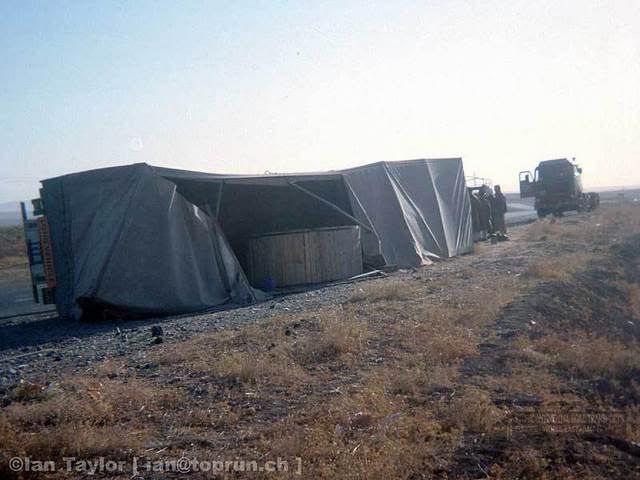jcs.
During the good old days, it was all rope and sheet work, on flat trailers, and nearly everything had to be handballed on, i.e. no pallets, just hard graft, 4am starts, to your pick up , load of 20 ton in hundredweight bags, hump them on and stack them properly so they didn’t move, then you had to rope and sheet your load, lift the sheets to the top of the load, unroll them, if the wind and rain didn’t take them, then rope it all up, get in your old Atki, with no power steering, heating, or any other power anything or other luxuries, and then drive 200 miles to wherever, undo everything, and hump it all off again.
In those days you loaded it yourself, no help, and the other drivers will tell you as well, if it was in the docks, especially London, no one helped you, they stood there laughing at you these Dockers, they all had strong unions and “Jobs for life” and most had other employment as London Cab Drivers, that used to pop in for there, pick up there money and then ■■■■ of.
So along came the Tilt, and this in our eyes was the future, everything under cover, and easily strapped up and loaded through any part of it, as it could all be stripped out or used in anyway, on Continental work, (Before Europe, mainly) you could load it and seal it, as the straps went through thousands of these little buckles, and all up an down and over the tilt and ended up at the back, the customs man would seal it, and you had a book called a Carnet de Passage, which was a book with tear out strips in it, he would stamp the first one, make a note of the number of the seal, and off you went, and every border post you crossed they would do the same, check the seal number against the Carnet, stamp it, tear out there bit and off you went again, when you reached your destination, he would again check it and if correct, sign and stamp your book, and if OK, he would break the seal and let you unload you.
When we joined Europe, they done away with seals and Carnets, and every customs post could if they wanted turn your load out, and a lot of them did, we now had T forms, and because of the language difference, there where misunderstancings and constant delays, at most of the borders, you see they now knew what you where carrying, it was all on the T form, and if it was shoes or wine, or something nice, you knew there sticky fingers would want some of it.
Now back to the tilt, it did have its bad points, especially if it had to be sealed, as i didn’t have many ways off keeping your load secure, there where a couple of hooks in the floor, and then there where huge drop sides, and then these flimsy wooden slats that always broke, it was also a nightmare to strip it out, if you had to do it yourself, I remember there wasn’t much in the way of restraining these loads, I was always thinking of ways of keeping the load secure, as I am of the “Chuck it in school” of driving, here’s a couple of photos when it didn’t work out, you can also see that the wooden side boards nearly always got broken, and you had to juggle them about the trailer for the best results.





